Cane Creek Helm Fork - Review
With five years of development time behind it, Cane Creek's much anticipated first suspension fork has been a long time coming. Sure, the North Carolina company is well versed in oil and shims when it comes to shocks, but stepping into the world of high-end front suspension is a whole other ball game, especially when their new, $1,100 USD Helm has to go up against the likes of the Pike, Lyrik, 34 and 36, Öhlins' RXF platform, and others.
The 4.43lb, air-sprung Helm is made for 27.5'' wheels (a 29er model will be released in the future), and it can have its travel set internally between 170mm and 100mm in 10mm increments. Control is taken care of by a mono-tube damper rather than a twin-tube system that Cane Creek employs in their shocks, and external adjustments include low-speed compression and rebound, and high-speed compression.
Cane Creek Helm Details
• Intended use: trail / all-mountain / enduro
• Travel: 100 - 170mm
• Wheel size: 27.5''
• Spring: air
• Manual negative spring
• Air volume adjustment for ramp-up
• Mono-tube damper
• Damper adjustments: low- and high-speed compression, low-speed rebound
• Stanchions: 35mm
• 7'' post disc mount
• Axle: 'D-Loc' 15mm QR Boost thru-axle
• Colors: black, blue (limited release option)
• Weight: 2,010 grams / 4.43lbs
• MSRP: $1,100 USD
• www.canecreek.com
The 4.43lb, air-sprung Helm is made for 27.5'' wheels (a 29er model will be released in the future), and it can have its travel set internally between 170mm and 100mm in 10mm increments. Control is taken care of by a mono-tube damper rather than a twin-tube system that Cane Creek employs in their shocks, and external adjustments include low-speed compression and rebound, and high-speed compression.
Cane Creek Helm Details
• Intended use: trail / all-mountain / enduro
• Travel: 100 - 170mm
• Wheel size: 27.5''
• Spring: air
• Manual negative spring
• Air volume adjustment for ramp-up
• Mono-tube damper
• Damper adjustments: low- and high-speed compression, low-speed rebound
• Stanchions: 35mm
• 7'' post disc mount
• Axle: 'D-Loc' 15mm QR Boost thru-axle
• Colors: black, blue (limited release option)
• Weight: 2,010 grams / 4.43lbs
• MSRP: $1,100 USD
• www.canecreek.com
I had exclusive access to Cane Creek's North Carolina head quarters during the Helm's late development push in 2016, and you can read the long-form article if you want to know more about the evolution of Cane Creek's first fork, the company's decision to go with a mono-tube damper, and why it took five years for the Helm to become a reality.
Just want to see how the Helm performed over the last five months? Keep scrolling down.
Inside the Helm
Not a twin-tube damper - Cane Creek has been touting the twin-tube damper layout that they use in their shocks since, well, the Double Barrel was first released many years ago, and you'd expect them to import a similar system into their first fork... and you'd also be wrong. Cost, packaging, complication and, according to Director of Engineering, Jim Morrison, no real performance advantage over a simpler mono-tube system saw them move away from a twin-tube damper for the Helm after building multiple functioning prototypes.
Early prototype Helm dampers. The first twin-tube, on the bottom, uses a Double Barrel piggyback, while the middle damper is a more compact version. The top is a prototype mono-tube damper.
The Helm's production mono-tube damper.
The Helm's sealed, mono-tube damper is a lot like what you'll find inside of a Pike or Fox 36, at least as far as basic architecture is concerned - it's a sealed damper bled free of air that uses an expanding bladder to compensate for fluid displacement as the damper rod is compressed. The cartridge can be removed, and you can also drop the lowers to perform some basic maintenance, without needing to bleed it. External damper adjustments include low-speed compression and high-speed compression, both at the top of the right fork leg, and low-speed rebound at the bottom of the same leg.
There's no pedal-assist lever that would firm the fork up for smooth climbs, and Cane Creek says that they decided to not include one in order to avoid sacrificing any damper performance for a climbing aid. That's a telling decision as it shows how Cane Creek intends the Helm to be used.
Low- and high-speed compression dials are at the top of the right fork leg, and low-speed rebound is at the opposite end.
Air spring - There's an air valve at the top of the leg, as you'd expect, but balancing the fork's negative pressure requires an extra step. Here's how it's done: after pressurizing the positive chamber, you unscrew the aluminum cap that protects the equalizing button at the bottom of the leg, back out a small threaded collar that allows you to depress the valve, and then give it a push to instantly equalize the positive and negative air chambers.
Ramp-up is tuned by adjusting the height of a fixed piston that sits underneath the top cap. You'll need a 30mm socket wrench to get inside the fork, but the piston is held in place via a wing nut that can be loosened and tightened with your fingers, and this can be set to eight different positions.
The eight-position volume adjustment can be tuned by hand... once you use a 30mm socket wrench to get into the fork. No volume tokens required.
Helm Chassis
The Helm's chassis is pretty straightforward - black, 35mm stanchion tubes, sturdy looking lowers and a roomy arch, as well a tapered steerer tube with cutting guides on it. It looks solid, but there's not much to set the Helm apart from the competition... until you look at the fork's 'D-Loc' axle that's certainly different to what else is out there. The 15mm Boost axle is four-sided rather than round, and it needs to be oriented correctly, hence the ''This side up'' laser etching on its top face.
The Helm features 35mm stanchions and offers plenty of mud clearance.
Once slid through the Helm's lowers, a keyed latch on the right fork leg locks the axle in place when it's flipped closed. Tension is adjusted via a nut under the QR lever on the opposite end of the axle, and it should be a set-and-forget type of thing, just so long as you're always using the same front wheel.
The 15mm D-loc thru-axle, shown here on the special release blue Helm, is quick and easy to use.
Riding the Helm
Sensitivity and Air Spring - Both of my Helm test forks were very smooth and free of stiction right out of the box, and they better be given the $1,100 USD price tag. Any of today's high-end forks absolutely have to slipperier than a buttered up eel, and the Helm most definitely meets that criteria; it's just as smooth after five months of use as it was when it was new. Cane Creek's manual negative air spring balancing lets you run more pressure in the negative side than the positive, a setup that is said to help ease the fork into its travel. I ran an extra 5psi in the negative spring by first over-inflating the fork by the same amount, balancing the two chambers, and then using a shock pump to release 5psi from the positive spring.
The difference is slight but noticeable, and the Helm was a touch more active at the top of its stroke with the pressure imbalance.
And speaking of pressure, Cane Creek recommends going with half your body weight to start, which would be 80psi for a 160lb rider like myself, and while that's where I started off, I found the fork to very over-sprung at that pressure. The Helm sports some relatively firm damping (even when things are wide open, but more on that in a bit) and that, combined with the firm spring rate, made for a pretty unforgiving front end that tended to deflect and push when I needed it most. Of course, figuring out the ideal setup is all part of the experience, and I ended up being happy with the positive pressure dropped down to 60psi, a full 20psi less than I started with, and 65psi in the negative chamber.
At those settings, the fork was plush, active, and didn't call on all its travel unless I was really being an idiot. The stroke is quite progressive for those idiot-moments, too, even with the volume puck at its highest, most linear setting, which is the opposite of most (all?) forks on the market these days that have to strike some sort of middle ground for all riders and then depend on tokens to tune-in more progressiveness. Cane Creek, on the other hand, has geared their spring curve to suit more advanced riders, which is refreshing to see but also something to keep in mind if you don't fall into that category.
Chassis Performance - Any fork with stanchions in the 34mm to 36mm range should be torsionally rigid enough for the very large majority of riders, especially this average-sized tester. The Helm's chassis, with its 35mm upper tubes and sturdy looking lowers, always felt stiff enough to me, which is all I can really say about it. Maybe I need to eat a lot more donuts and get back to you. No surprise, it's very comparable to the 36, Pike, and Lyrik on this front, as you'd expect.
The fork's keyed D-Loc 15mm thru-axle is pretty clever, and it's easy and quick to use once you've got the tension adjusted correctly. I'm a fan of bolt-on axles as there's less to go wrong or break, but the D-Loc setup works well, never came loose, and didn't give me a single hassle.
Damper Performance - Let's be real here: a 36, Pike, Lyrik and the rest of the gang all feel pretty similar just so long as your setup isn't completely out to lunch. At the risk of offending those who believe they're extra-sensitive, world class riders, I'd even go so far as to say that the large majority of us would have a very difficult time correctly naming any of the top four or five forks during a blind test. But due to its firm, supportive ride, I think that the Helm would be pretty easy to pick out while your eyes are covered.
When it comes to a Pike or 34/36, I tend to prefer a fair bit of low-speed compression control dialed in, usually in combination with a bit higher than suggested air pressure for my weight and some volume reduction, but I settled on the exact opposite setup with the Helm after it quickly became obvious that the fork's damper sits on the firm side of things. With the low-speed compression dial turned halfway in, the fork stays remarkably high its travel, thereby preserving the bike's geometry and providing a firmer platform that creates a lively, playful ride. But it can also feel a touch harsh and unforgiving, especially if you're cruising rather than crushing. Advanced riders will likely love the stable, controlled feel at the front of their bike, and there were many days when I was happy to have exactly that, but the majority of the time saw me have the gold anodized LSC dial backed completely out.
The Helm's fully backed out low-speed control still seems more pronounced than the competition's when theirs is dialed on heavily, which is an unexpected, and the same goes for the fork's high-speed damping that saw me either run zero or just a single click in from being fully backed out. Granted, I'm a 160lb expert-level rider rather than a 190lb professional enduro racer, but I was still surprised to find that my preferred damper settings were basically full open on both compression adjustments. Out of curiosity, I did experiment with a softer spring rate, just to see if that, combined with firmer compression settings, felt a bit more forgiving, but I ended up back at 60psi and with both crown-mounted dials turned completely to the left.
The Helm's fully backed out low-speed control still seems more pronounced than the competition's when theirs is dialed on heavily, which is an unexpected, and the same goes for the fork's high-speed damping that saw me either run zero or just a single click in from being fully backed out. Granted, I'm a 160lb expert-level rider rather than a 190lb professional enduro racer, but I was still surprised to find that my preferred damper settings were basically full open on both compression adjustments. Out of curiosity, I did experiment with a softer spring rate, just to see if that, combined with firmer compression settings, felt a bit more forgiving, but I ended up back at 60psi and with both crown-mounted dials turned completely to the left.
It's clear that the Helm's tune hasn't been modeled to appease everyone from a timid casual rider to the aggressive weekend warrior, as most forks must. Cane Creek is obviously looking to set their fork apart in this department. To do that, the Helm's damper and air spring both offer an incredibly supportive ride, one that's suited to the more aggressive, hard charging people out there. That said, I don't believe that I should need to have both compression settings backed fully out for my weight and skill level, and it'd be good to see more of a useable compression damping range. With both compression dials backed out, and 60 to 65psi in the positive chamber, the Helm worked well for my 160lb weight and typical B.C. singletrack when I was on the gas, but it could feel unforgiving if I wasn't charging hard.
Pinkbike's Take:
Author Info:
Must Read This Week
Sign Up for the Pinkbike Newsletter - All the Biggest, Most Interesting Stories in your Inbox
PB Newsletter Signup

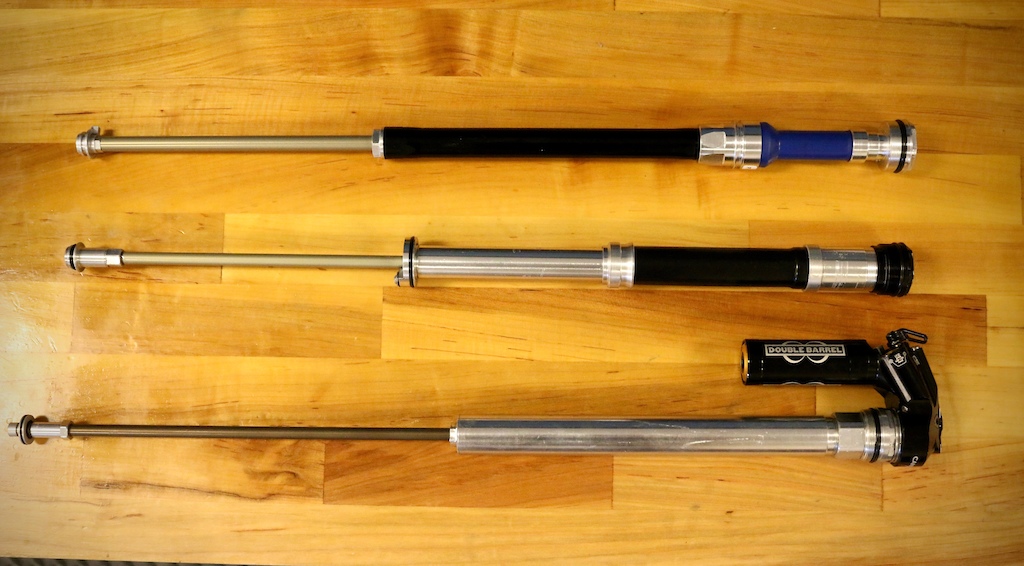
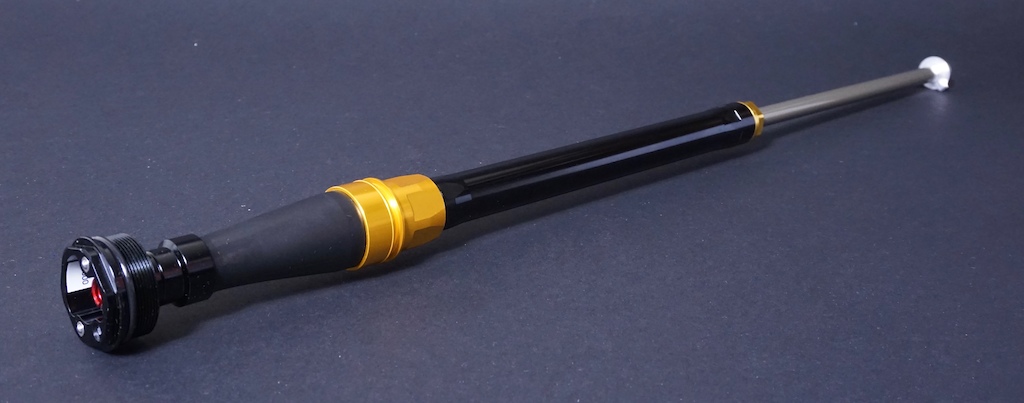
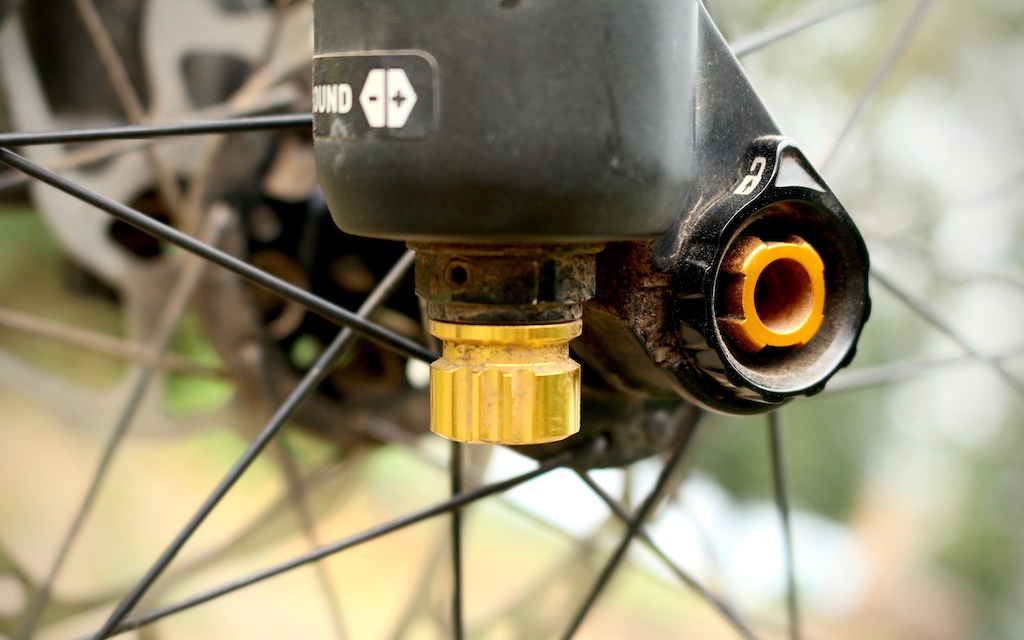





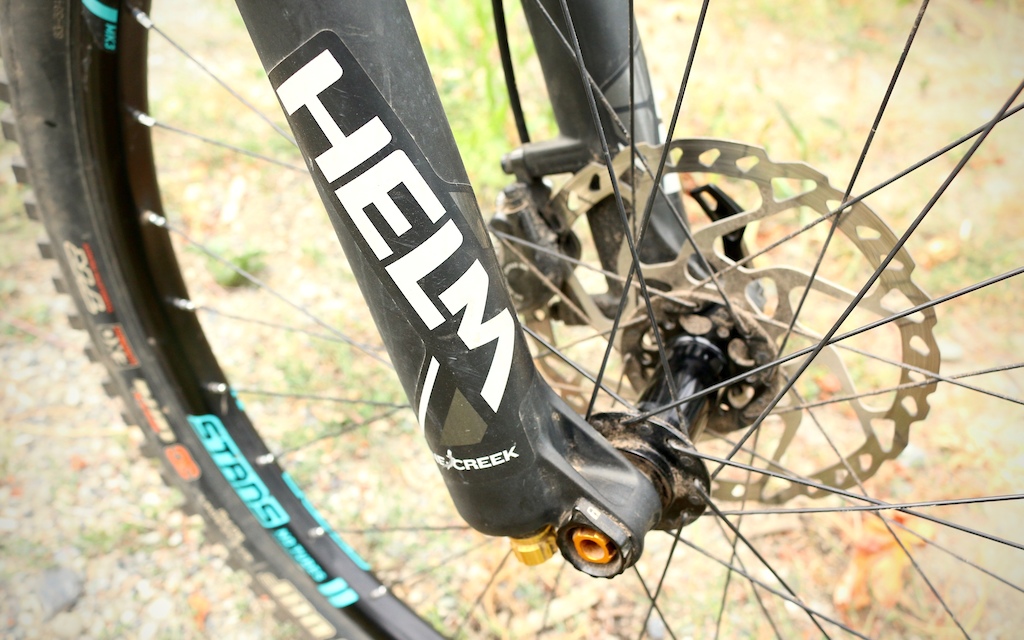

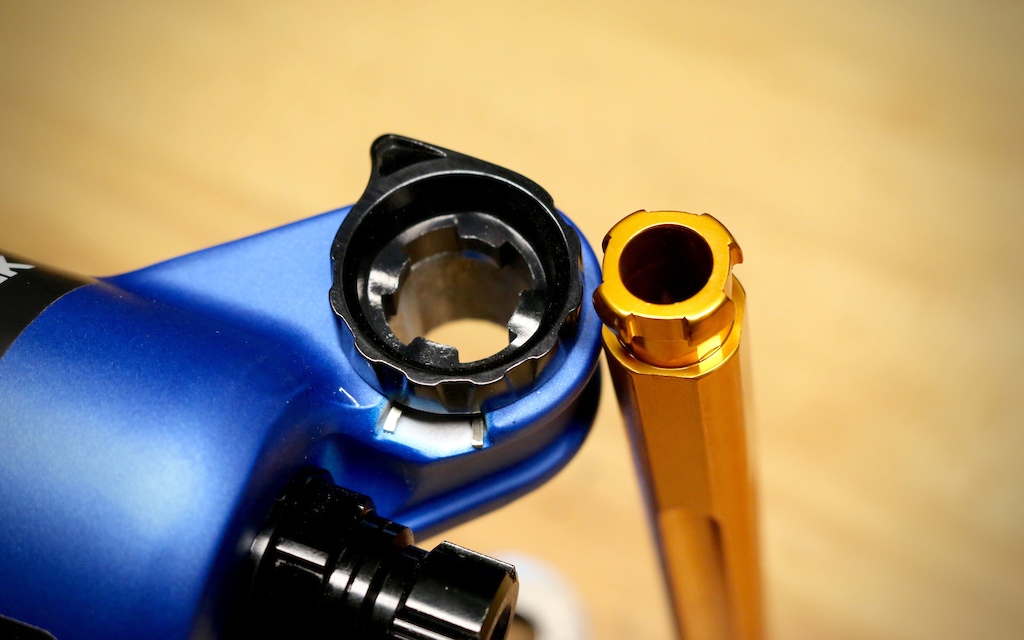
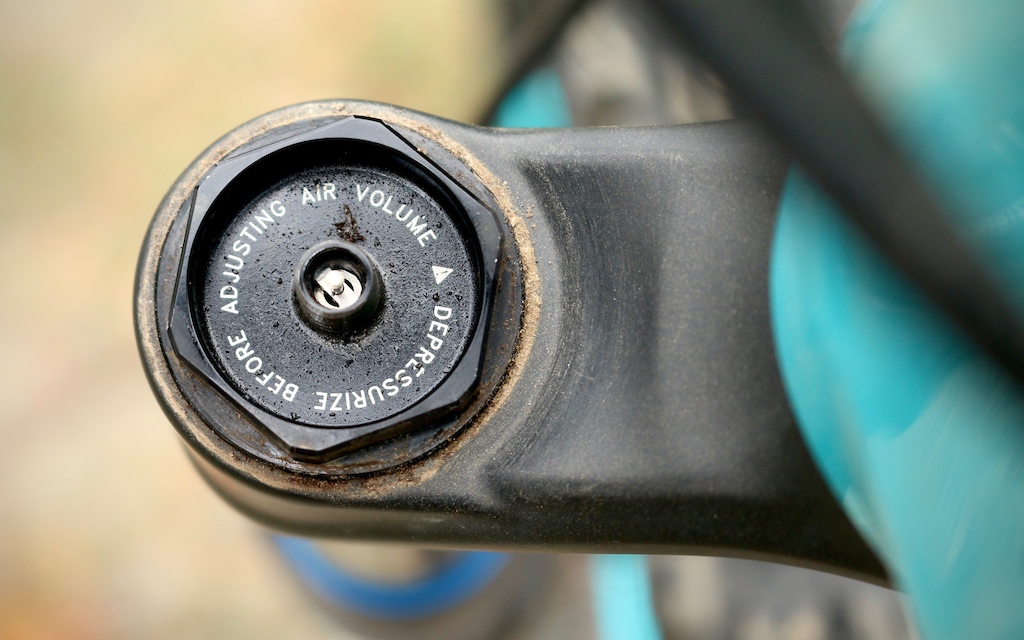
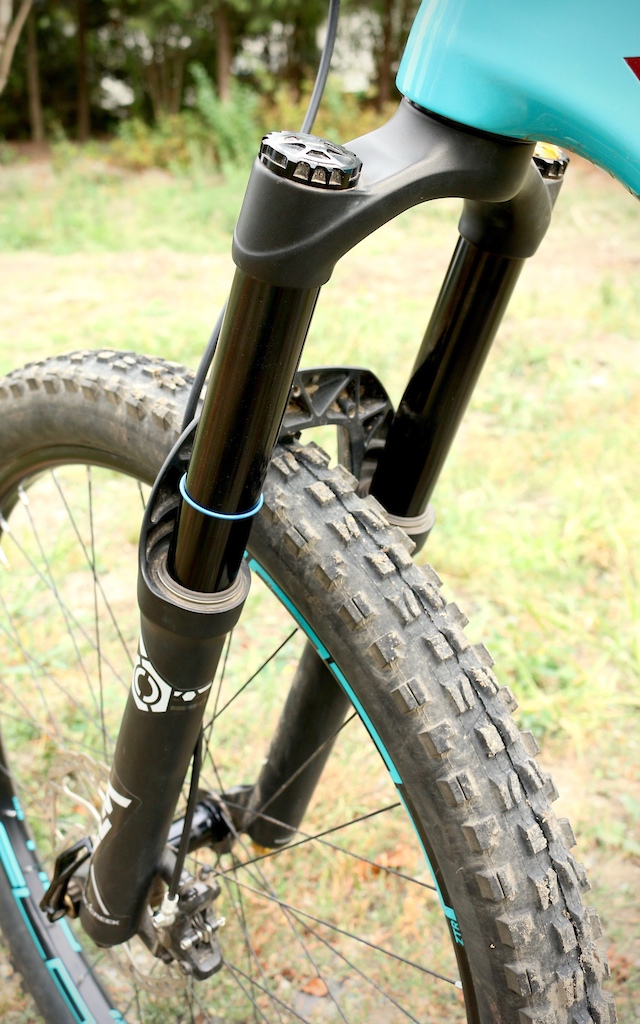

Geez.
C'mon, yeah
Yeah, c'mon, yeah
Yeah, c'mon
Oh, yeah, ma
Yeah, I'm a back door man"
— Jim Morrison, Director of Engineering, on choosing a mono-tube damper instead of a twin-tube system for the Helm.
I'm glad you responded. What's hysteresis?
In statically loaded systems hysteresis is the non elastic (plastic) deformation that is normally permanent in the short term.
"Permanent in the short term" - that's one new concept too many for me, I'm out...
The main advantages of a twin-tube system is that the oil is only under compression on one side of the piston in the main tube, and overall oil pressure is lower. This allows for different oil seals that put less friction on the sliding surfaces, lowering hysteresis. Twin tube dampeners also have their adjustments external, making it easier to micro-adjust the shock. This is why we mostly see HSC/LSC and HSR/LSR only on twin tube shocks.
Or call the fork "Thudbuster 2.0"
/sarcasm
You make a good point though that there may have been more than just the fork at play @martino ?
I actually think the biggest difference is brakes when trying to get rid of arm pump. Got a new ride last year which came with guide rsc and noticed arm pump on first ride down 1000m decent. Switched to saints....problem solved. Hanging onto a poor brake on a steep decent with one finger is a killer for me
.
I await the 29er coil version of this
I have an older RS Revelation (2010?) on my backup bike that has independently adjustable neg air. I run a few more psi in it than the main chamber- it really changes the feel. Too bad that doing this on the Helm seems like a PITA.
The problem is the air seals pistons etc. getting stuck and requiring service very often (I have to take my pike apart every month)
Formula are the only forks, free of stiction, "after one year of use, no service".
Besides the Bomber from 97.
However I like the CC shocks, I am curious to try the Helm.
Maybe invest some money in mtb coaching.
Just an honest advice.
You take off the the QR.
And your going no where fast unless you have tools.
why not just have pinch bolts?
Truthfully you have to try pretty hard to hurt a rim if you've got your tire pressurized correctly (~32-35 psi for me). Last time I dented a rim I hucked a massive water bar on a local downhill run and landed square on a toaster sized rock. Truly amazed it wasn't more catastrophic than that.
I am running 18psi on a wtb KOM i29, 16psi front and still am having zero issues. High roller 2's 29 2.35".
That being said, I have ridden in the west, mid-west, northeast, and south for more than a year. Still haven't smoked a derailleur, broken a bar, snapped a chain, or cracked a crank. I sometimes just don't know if i am more precise than some people, or I just take less chances.
Sorry but what's the point of this article? The only thing I want to know about the Helm is if it's going to explode like the Inline, unless it's absolutely bombproof why would ANYONE touch one when there's so much great competition?